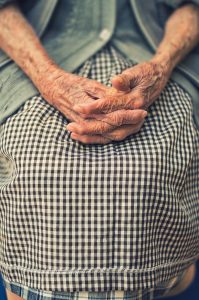Myth Busting Osteoarthritis
Our population is definitely not getting any younger and therefore joints are wearing out and getting replaced more and more regularly. Everyone reading this probably knows one person with a knee or hip replacement.
FIRSTLY… What is osteoarthritis and how do I know if I have it?
Osteoarthritis is a natural wearing process in which the protective cartilage that cushions the ends of your bones wears down over time. This is a by product of years of movement, friction and mechanical pressure over the joint surfaces. People can have osteoarthritis and not even know where as other people can suffer dreadfully with arthritic aches and pains.
How do I know if I have Osteoarthritis?
- It can effect all joints but typically the knee, hip and hands are the most common areas.
- Painful or aching joints.
- Swelling and tenderness surrounding joints.
- Palpable heat or inflammation within the joint.
- Restricted movement or mobility that may be painful.
- Clunking or clicking in the joint.
- Gradual building pain or loss of function.
6 Myths surrounding managing arthritis!
- Load bearing exercise is ‘bad’ for joint health.
Load bearing exercise at times have been given bad press in regards to the management of arthritis. I agree that at times when your symptoms are playing up it can be ill advised. But on the whole weight bearing strengthening exercises have shown to increase muscle strength, joint and cartilage health. Bone like a muscle will respond to structured gradually loading and get stronger 💪 - I should avoid exercise in case I make my Osteoarthritis worse.
Exercise plays a key role in the management of Osteoarthritis with structured programming targeting muscular strength. Mobility exercises and stretching also form an integral role for good joint health. Weak and stiff joints tend to more symptomatic and painful than mobile and strong joints! - Osteoarthritis should only be managed with anti-inflammatory medications.
This is a very 2 -dimensional medical approach to managing your Osteoarthritis. There is definitely a time and place for anti-inflammatory medications along the arthritic journey. Using medications to manage a flare up of symptoms is appropriate if in short time frames with clear guidelines. You don’t want to get stuck on the anti-inflammatory train taking them every day to get by – If you’re doing this it may be time to visit the surgeon! - Surgery is the only option to help my symptoms.
For advanced arthritis that is effecting your quality of life, sleepless nights due to pain are the norm and you’re eating anti-inflammatories like lollies then again you may need to call the surgeon! If you have mild or early stage arthritis surgery is NOT your only option. Physiotherapy plays a vital role in helping improve joint health, muscle strength and joint range of motion. This will not only help in the immediate phase to resolve symptoms but in the unfortunate result of needing surgery your efforts pre-surgery tends to make life post surgery much easier. - Osteoarthritis only effects elderly people.
Your family history, surgeries in your younger years, traumatic injuries and obesity can all lead to osteoarthritis in younger people. - Running can lead to osteoarthritis.
There has been numerous studies showing no evidence that running increases the chances of getting osteoarthritis. It’s actually shown it can help lessen the likelihood of OA due to keeping body weight low, regular exercising to strengthen muscles and the impact loading can help create resilience in the cartilage.
Any questions about an injury shoot us a message, give us a call on (02) 4751 9127 or book a session online!
Written by Pat Lincoln
(Physiotherapist)


